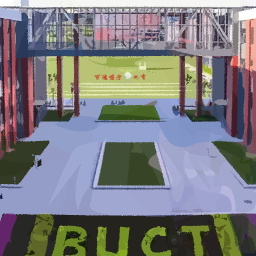The following contents are my reading notes for Compiler (the Dragon Book)-Chapter III. An implementation of the Lexical analyzer is provided in the last section.
Contents:
- The Role of the Lexical Analysis
- Input Buffering
- Specification of Tokens
- Recognition of Tokens
- LEX
- Finite Automata
- My Implementation
The Role of the Lexical Analyzer
The very first layer of the front end of a compiler’s architecture
Lexical Analysis Versus Parsing
The reason why the analysis portion of a compiler is normally separated into two lexical analysis and parsing:
- (Most Importantly) Simplify the design of compile
- Improve compiler efficiency
- enhance compiler portability
Tokens, Patterns, and Lexems
- TOKEN: a pair consisting of a token name and optional attribute value
- PATTERN: a description of the form that lexemes of a token may take
- LEXEME: s sequence of characters in the source program that matches the pattern for a token and is identified by the lexical analyzer as an instance of that token
examples: see page 112.
Attributes for Token
- WHY WE NEED ATTRIBUTES: Since more than one lexemes can match a single pattern, such as both 0 and 1 matches number, it is necessary to use an attribute for a token to distinguish different concrete lexemes
- IMPORTANT EXAMPLE: The most important example is the token id, which we associate with lots of information. Normally the information about an id, such as {lexemes, type, location, …}, is kept in the symbol table. Thus the proper attribute value for an id is a pointer to the symbol-table entry for that identifier
Lexical Errors
- Errors like the typo ”fi”:
- This is not the error we are discussing here!
- because: the lexical analyzer cannot tell whether fi is a misspelling keyword if, or an undeclared function identifier. Since **fi *************is a valid lexeme for the token id. Thus, the lexeme analyzer must return the token id to the parser and let some other phases of the compiler handle such errors.
- Errors like the lexical analyzer being unable to proceed due to none of the patterns for tokens matching any prefix of the remaining input
- These are the errors we are discussing here and there’re several error-recovery actions:
- delete successive character
- delete one character
- insert a missing character
- replace a character
- transpose two adjacent characters
Input Buffering
- Buffer Pair techniques:|——BUFFER_i———|——BUFFER_ii———|maintaining two pointers:
- Pointer lexemeBegin, marks the beginning of the current lexeme
- Pointer forward scans ahead until a pattern match is found
By using such technique, for each character read we have to make two tests: end of buffer? && what char is read?
- Improvement SENTINELS:Combining two tests by inserting extra EOF at end of each buffer
switch(*forward++) { case eof: if(forward is at end of first buffer) { reload second buffer; forward = beginning of the second buffer; } else if(forward is at the end of second buffer) { reload first buffer; forward = beginning of the first buffer; } else /* end of the input source, terminate lexical analysis*/ }
Specification of Tokens
a regular expression, aka regex, is important in specifying patterns we actually need for tokens.
String and languages
- STRING: a string over an alphabet $\Sigma$ is a finite sequence of symbols drawn from that alphabet.
- LANGUAGE: a language is any countable set of strings over some fixed alphabet.
Operations on Languages
- Union $L\cup M = \{s | s \in L \vee s \in M\}$
- Concatenation $LM = \{ st | s \in L \wedge m \in M\}$
- Kleene closure $L^*$
- Positive closure $L^+$
notice that $LM \neq ML$
Regular Expression
- BASIS
- INDUCTION
Extension to Regex
- one or more instances: +
- zero or one instance: ?
- character classes: [0,1,2,3] or [0-3]
Recognition of Tokens
Transition Diagram
- the diagram has a collection of nodes or circles, called state
- Important Conventions of diagram:
- certain states are said to be accepting or final state
- if it’s necessary to retract forward pointer one position, we additionally place a * near the accepting state
- One state is designated the start state or initial state
Reserved Words and Identifier
reserved words and identifiers are very similar, and there are two ways to distinguish them:
- place reserved words in the symbol table beforehand
- prioritize diagrams for each keyword so that reserved-word tokens are recognized in preference to id
Architecture of a Transition-Diagram-Based Lexical Analyzer
such one diagram can be written as a C++ function that returns a structure containing a token and attribute. The function is basically a switch statement or multiway branch that determines the next state.
Examples, see Page135
How do these diagrams work in the big picture of the analyzer?
- one by one, but prioritize keyword diagram
- “in parallel”, take the longest prefix of the input that matches any pattern
- combining diagrams altogether, take the longest prefix of the input that matches any pattern (this combining process can be hard)
LEX
Use of Lex (Pipeline)
Lex source program (lex.l) → [Lex Compile] → lex.yy.c
lex.yy.c → [C compiler] → a.out
Input stream → [a.out] → Sequence of tokens
Structure of Lex Programs
There are basically three sections separated by %% in lex.l file:
- declarations
- translate rules
- auxiliary functions
The I and III sections will be copied directly to lex.yy.c.
Conflict Resolution in Lex
- always prefers a longer prefix to a shorter prefix
- If the longest possible prefix matches two or more patterns, prefer the pattern listed first in the Lex Program
The lookahead operator /
what follows / is additional pattern that must be matched before we can decide that the token in question was seen, but what matches this second pattern is not part of the lexeme.
Finite Automata
automata are essentially graphs, with few diffs:
- finite automata are recognizers, simply say “yes” or “no” about each possible input string
- Finite automata come in two flavors
- NFA
- DFA
NFA
consists of:
- A finite SET of states S
- A set of input symbols $\Sigma$
- A transition function
- A state $s_0$ from S that is distinguished as the start state
- A set of states $F$, a subset of S, that is distinguished as the accepting states.
This graph is very much like a transition graph except:
- one symbol can label edges from one state to several states
- an edge may be labeled by $\epsilon$, the empty string $\phi$, symbols from $\Sigma$
Transition Tables
Instead of representing finite automata as a graph, we can use a transition table.
Example, see Page 149
Acceptance of Input String by Automata
- NFA accepts a string as long as exists one path labeled by that string leads from the start state to an accepting state.
- $L(A)$ stands for the language accepted by automaton $A$
DFA
A special case of NFA.
- no move on input $\epsilon$
- for each state s and input symbol a, there is exactly one edge out of s labeled a.






